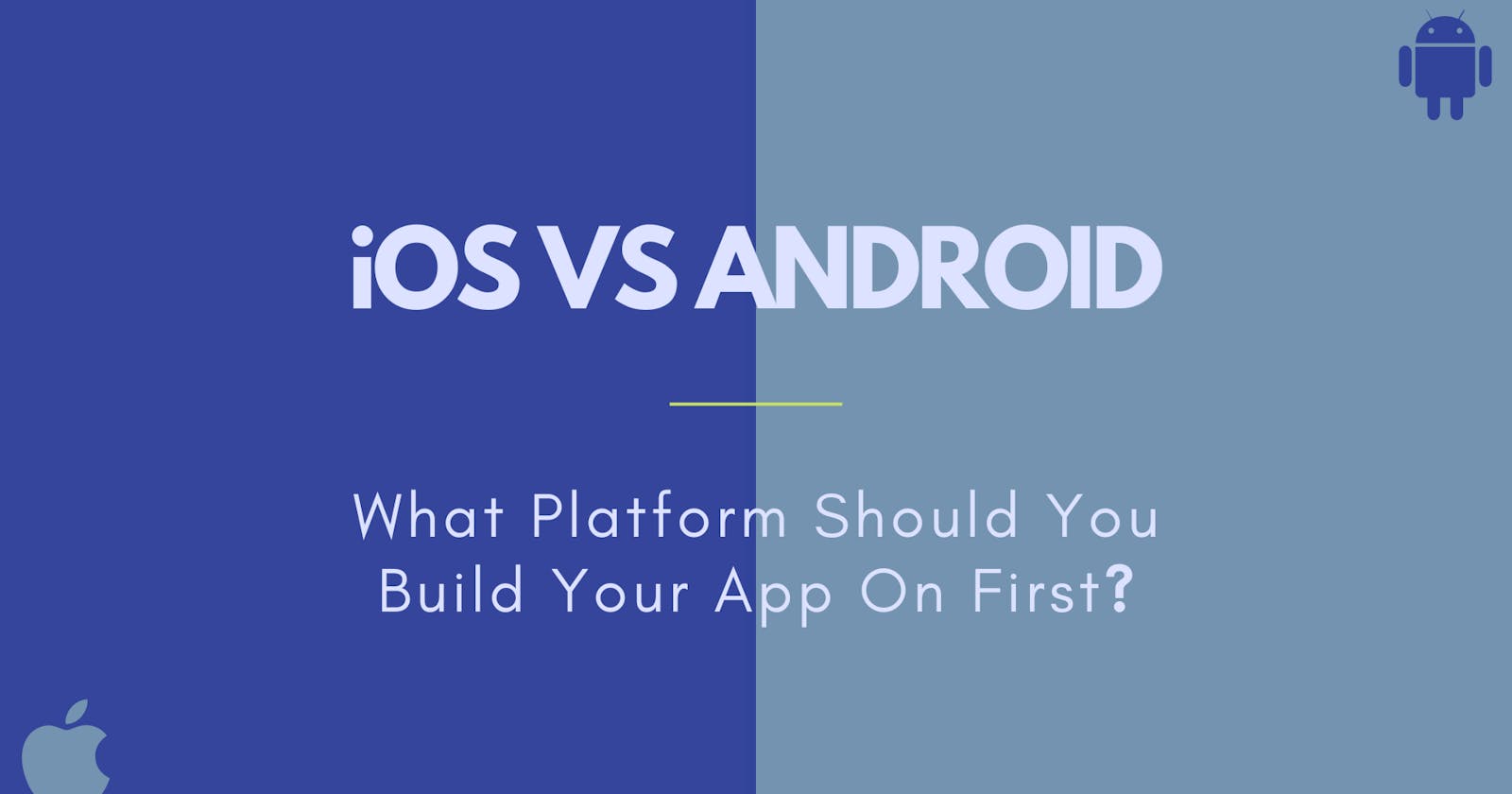Nearly half (48%) of small businesses have an app in 2022, compared to one-third (32%) in 2021, possibly because consumers are spending more time on their mobile devices than ever before. 🏆
Most small businesses have apps for both iOS and Android devices (37%), while 35% have only an Android app and 25% have only an iOS app. 😲
Entrepreneurs who focus on one platform at the beginning of their business have found success.
Deciding whether to build a business app for Android or iOS (Apple) depends on 5 factors: your audience, project timeline, desired app features, app maintenance budget, and revenue goal. We compiled statistics on these factors to help you choose — android vs iOS. 👇
Where to start? Android or iOS 🚀
It depends on your target audience, demographic, and many other factors one can select the mobile operating system.
When to choose Android first?

You can choose to create for Android first if you want to reach a wider audience worldwide and get more downloads. Particularly if your target audience lives in India, China, and UAE, you can leverage the best return on investment in these regions as the users use more Android apps.
If you want to monetize your app with in-app advertisements, designing the app for Android may be more profitable due to the increased number of Android users and downloads. Consider your target audience’s preferences for features as well as whether Android gives you more freedom to implement those features.
When to choose iOS first?

iOS should be your first choice when you want to build a minimum viable product. At the same time, if your target audience lives in the USA and UK- it might be a better choice to go for iOS as the users in these areas use iOS more.
iOS is a better option if you want to monetize your apps without in-app ads and if you want to provide in-app purchases and premium editions of your app because iOS users are more likely to do in-app purchases.
Thus, the type of app you intend to create and the target audience will determine the platform you choose.
When to choose Hybrid technologies?
Choose the hybrid technologies when you have the following needs:
- You aim to enter the market as soon as possible.
- Reaching out to a broader audience is your priority.
- You are limited in resources (time, money, and human resources).
- You already have a website and want to turn it into a simple, feature-light app.
- The app you want to develop doesn’t involve complex animation and graphics.
Choose the Native technologies when you have the following needs:
- You need the best performance.
- You need secured apps.
- You need better customization and UX.
- To make the most of device hardware.
Things to consider before you start developing an app 💣
5/5 — Target audience

Identify your target audience and the overall goal of your app before any development starts.
According to TechCrunch, the average price for in-app purchases on the App Store has climbed to 40% since last year (From July 2021-July 2022), while Play Store prices only saw a 9% increase during that same time. Any business trying to maximize its ROI when developing mobile apps needs to know this information. They can use it to determine whether they want to promote to an audience that is more likely to purchase their app (iOS users) or prefers free apps (Android users).
You should also pay close attention to the demographics. Consider who will find your idea to be most appealing, how much time do they spend on their mobile phone and apps? What benefits are they receiving after using your app? And most importantly what makes you unique?
4/5 — The Cost and Time of Development

iOS development is quicker, simpler, and less expensive than Android development. The coding languages that the two platforms use become a significant factor.
Android relies on Java and involves writing more codes and thus boosting the development time. Another reason is, Android is an open-source platform, and due to lack of standardization that results in more devices, components, and software changes to account for.
iOS uses Apple’s native programming language, Swift. Swift seems more user-friendly and tailored to the needs of iOS developers. As a result, less time is spent coding, which lowers expenses and time of development.
Like Android, iOS is not an open-source platform and it strongly encourages software standardization to guarantee the correct and flawless operation of the app on all devices for which it was designed. This saves time during development and lowers future expenses on bug fixes.
3/5 — App Development Budget

Developing an app requires investment along with planning and strategies. It’s crucial to know your budget and allocate it to the various phases of app development. The technology used for app development, features & functionalities, maintenance, and marketing of an app are a few of the elements that require a financial investment.
Your app’s budget essentially depends on your niche. The kind of app you want to build and the kind of content you want to include in it.

